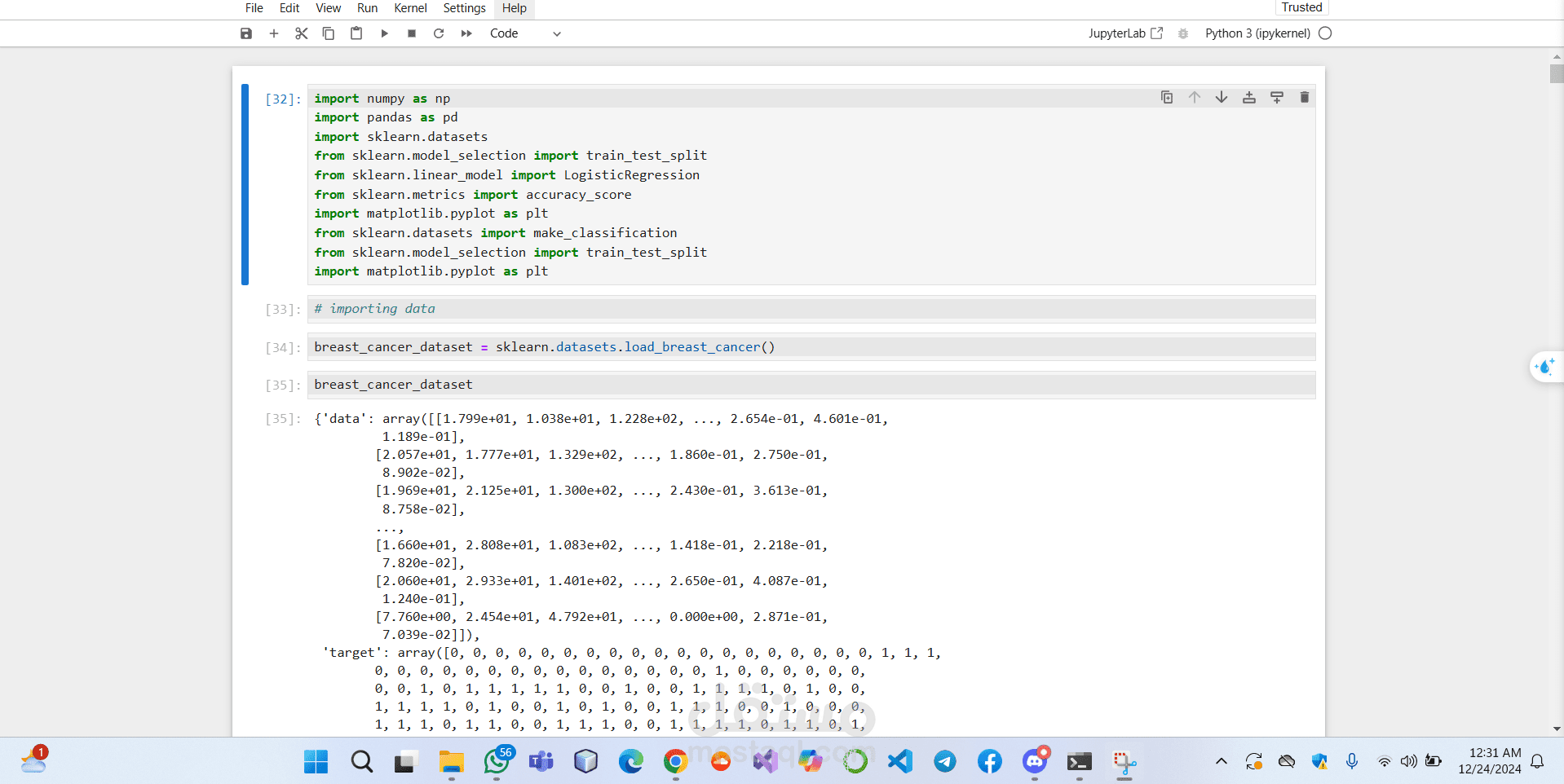Breast Cancer Prediction Model
تفاصيل العمل
Project Description: Breast Cancer Prediction Model using Machine Learning
Objective:
The goal of this project is to build a machine learning model that predicts whether a breast cancer tumor is malignant or benign based on available data. The model will help in early detection and diagnosis of breast cancer, assisting healthcare professionals in making better-informed decisions.
Key Tasks:
Data Collection and Preprocessing:
Gather a dataset, such as the famous Wisconsin Breast Cancer Dataset, which includes various features like tumor size, shape, and texture.
Clean the data by handling missing values, encoding categorical features, and scaling numerical features to prepare it for modeling.
Feature Engineering:
Select the most relevant features and apply techniques like Principal Component Analysis (PCA) or feature scaling to improve model performance.
Model Building:
Use machine learning algorithms like Logistic Regression, Random Forest, Support Vector Machines (SVM), or K-Nearest Neighbors (KNN) to train the model on the dataset.
Model Evaluation:
Evaluate the model’s performance using metrics such as accuracy, precision, recall, F1-score, and ROC-AUC.
Hyperparameter Tuning:
Use grid search or random search to fine-tune the hyperparameters of the model and improve its accuracy.
Deployment:
Create a user interface where users can input features (such as tumor size, texture) and get predictions (benign or malignant).
Technologies:
Programming Language: Python
Libraries: Scikit-learn, Pandas, NumPy, Matplotlib
Tools: Jupyter Notebooks
Expected Outcomes:
A trained model that accurately predicts whether a breast cancer tumor is benign or malignant.
A simple interface for users to input data and get predictions.
Applications:
This model can be used in healthcare for early breast cancer detection, aiding in quicker and more accurate diagnoses.
